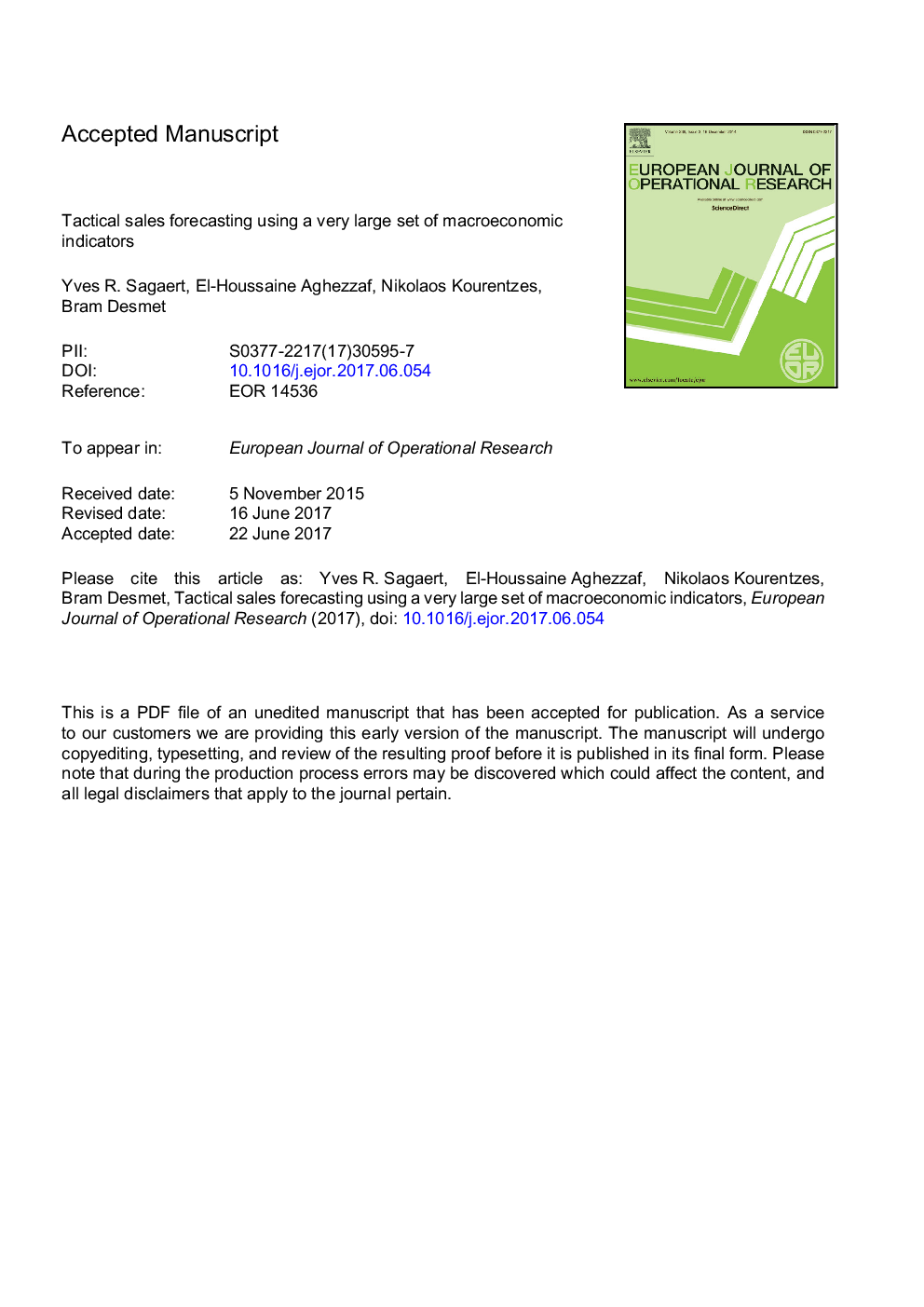| Article ID | Journal | Published Year | Pages | File Type |
|---|---|---|---|---|
| 4959417 | European Journal of Operational Research | 2018 | 37 Pages |
Abstract
Tactical forecasting in supply chain management supports planning for inventory, scheduling production, and raw material purchase, amongst other functions. It typically refers to forecasts up to 12 months ahead. Traditional forecasting models take into account univariate information extrapolating from the past, but cannot anticipate macroeconomic events, such as steep increases or declines in national economic activity. In practice this is countered by using managerial expert judgement, which is well known to suffer from various biases, is expensive and not scalable. This paper evaluates multiple approaches to improve tactical sales forecasting using macro-economic leading indicators. The proposed statistical forecast selects automatically both the type of leading indicators, as well as the order of the lead for each of the selected indicators. However as the future values of the leading indicators are unknown an additional uncertainty is introduced. This uncertainty is controlled in our methodology by restricting inputs to an unconditional forecasting setup. We compare this with the conditional setup, where future indicator values are assumed to be known and assess the theoretical loss of forecast accuracy. We also evaluate purely statistical model building against judgement aided models, where potential leading indicators are pre-filtered by experts, quantifying the accuracy-cost trade-off. The proposed framework improves on forecasting accuracy over established time series benchmarks, while providing useful insights about the key leading indicators. We evaluate the proposed approach on a real case study and find 18.8% accuracy gains over the current forecasting process.
Related Topics
Physical Sciences and Engineering
Computer Science
Computer Science (General)
Authors
Yves R. Sagaert, El-Houssaine Aghezzaf, Nikolaos Kourentzes, Bram Desmet,
